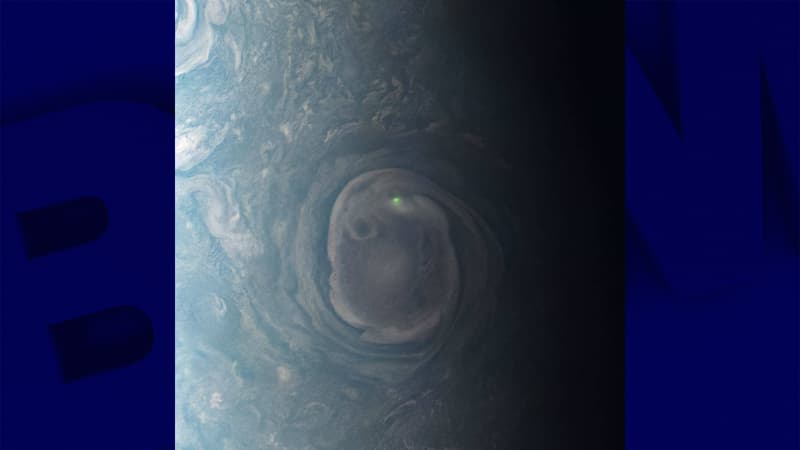A green dot, a beige and greenish expanse. The Juno probe, whose objective is to explore Jupiter, took a photograph of a flash in the sky at the level of its north pole. The existence of lightning on this planet, the largest in the solar system, has been confirmed for several decades, reports the media specialized in new technologies CNET. This new image, captured in 2020, however, has the particularity of having been discovered and processed by an amateur astronomer.
Kevin Gill is one of the “citizen scientists”, the expression of the American Space Agency, who investigates the public archives of photos taken by Juno that NASA makes available. The photo was taken on December 30, 2020, during the probe’s 31st pass near Jupiter, but no one noticed that it included a flash. This type of event is regularly observed but continues to interest specialists and enthusiasts.
The amateur astronomer processed the photo in 2022 from raw data to show the color tone of Jupiter’s sky and the emerging green dot. This information was captured about 32,000 kilometers north of Jupiter.
A north pole conducive to lightning
This image allows to underline the difference between Jupiter and the Earth, where the rays are formed mainly at the level of the Equator, in clouds composed of water.
“On Jupiter, lightning probably also occurs in clouds containing a solution of ammonia and water, and can be observed more frequently near the poles,” NASA details on its website.
The space agency explains that the Juno probe will approach Jupiter several times in the coming months, which will give its instruments, and in particular its device intended to feed NASA’s public archive, the opportunity to capture lightning again.
The Juno probe was launched in 2011 to collect information about Jupiter’s sky, but also about its inner layers. The goal is to better understand the composition and formation history of this gas giant.
Source: BFM TV


